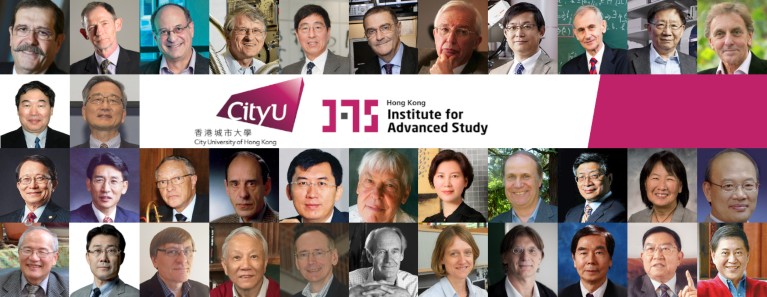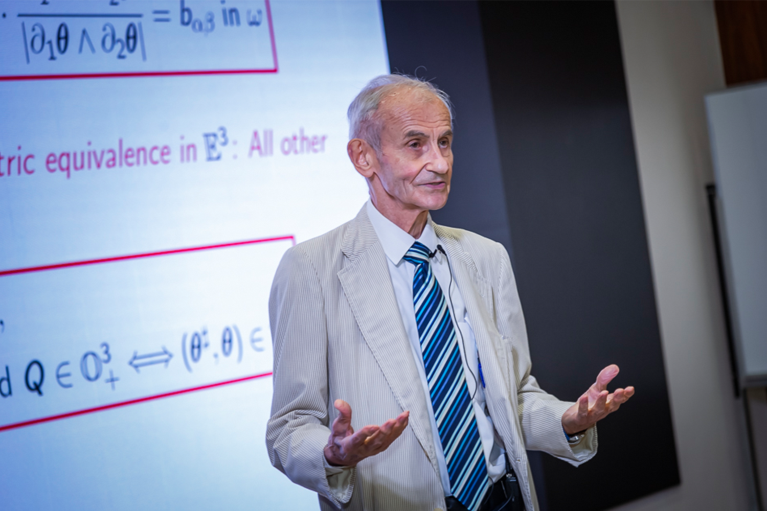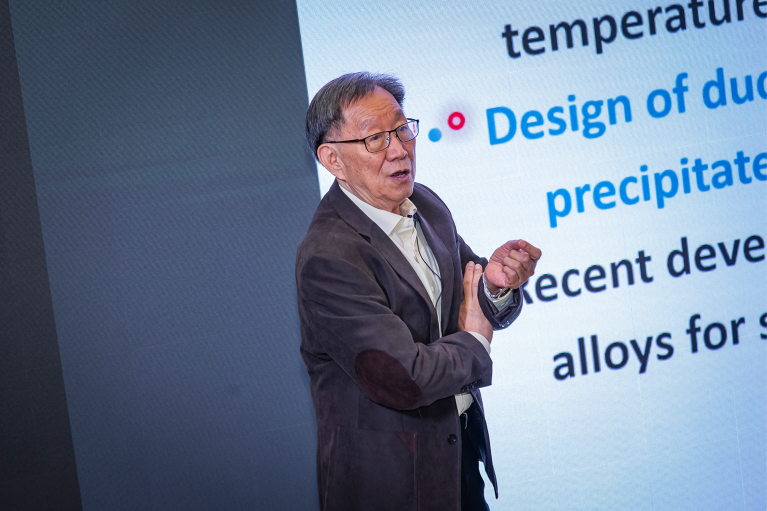
Credit: Hong Kong Institute for Advanced Study, City University of Hong Kong
The Hong Kong Institute for Advanced Study (HKIAS) has been pushing the boundaries of knowledge through interdisciplinary collaboration, celebrating the scientific achievements of its global community of scholars.
In November 2020, Philippe G. Ciarlet and Chain-Tsuan Liu, two university distinguished professors at City University of Hong Kong (CityU) and senior fellows of HKIAS, shared the mathematical analysis to pioneering approaches and the advanced development in structural materials during the virtual ‘HKIAS Distinguished Lecture’ series.
New grounds for surface geometry
In his research into elasticity theory, German physicist, Arthur Korn, stumbled upon the idea of the gradient of a vector field: if it is skew-symmetric at every point, then the gradient must be equal to a constant skew-symmetric matrix. This observation was named after him as Korn inequality. Successive efforts over the years included its proofs and extensions, which promoted understanding of linear elasticity, as well as basic theories of mathematical functions, such as existence and uniqueness.

On 5 November 2020, Philippe G. Ciarlet gave a talk titled ‘Nonlinear Korn Inequalities on a Surface’.Credit: Hong Kong Institute for Advanced Study, City University of Hong Kong
“Traditional research focus over the past century is dominated by the linear form of Korn inequality,” said Ciarlet. “My collaborators and I presented a new idea in 2005 with its non-linear form.”
This is also the theme of Ciarlet’s lecture, examining non-linear Korn inequalities on a surface, along with non-linear elastic shells, one of the most complex topics in mechanical physics, and their numerical analysis.
In differential geometry, the fundamental forms of a surface characterize the qualities of its location relative to a given point, regardless of the coordinate system. Ciarlet, an Officer of the Legion of Honor in France, who joined CityU in 2002, was the first mathematician to show that a surface continuously varies according to its two fundamental forms, and thereby introduced a new idea. His models and methodologies have expanded classical differential geometry and enabled diverse engineering applications from hydrodynamics to geosystem modelling.
“Facilitated by our findings, other researchers have introduced new numerical methods for modelling the Earth surface, whose numerical evidences appear to indicate that such methods perform better than the classical methods,” he added.
Material innovations for diverse applications
Consider the extreme environment for spatial exploration, particularly for NASA's Cassini Spacecraft which has been exploring Saturn and beyond. From securely housing its radioactive fuel pellets in all conditions, including impacts of atmospheric entry, iridium-base alloys were developed by Liu, a respected expert in the field of intermetallic and metallic materials.

On 25 November 2020, Chain-Tsuan Liu gave a talk titled ‘Alloy Design of Structural Materials from Simple Disordered to Complex Ordered Material Systems’.Credit: Hong Kong Institute for Advanced Study, City University of Hong Kong
“We chose iridium as the base material because of its high melting point at 2,450°C, while demonstrating good corrosion and oxidation resistances nonetheless,” he said. The success of the resulting fuel claddings brought Liu the Ernest Orlando Lawrence Award in 1988, and the alloy has seen extended applications from gas turbine engines to aircraft components.
Liu also introduced ultra-high strength steels by nanoscale precipitates, addressing the need for global producers to improve steel quality while reducing energy consumption.
Another alloy type was developed from a spectrum of ‘simple disordered’ to ‘complex ordered’ material systems, known as intermetallic materials. While these two systems demonstrate competitive advantages in strength and ductility at different temperatures, Liu and his research team have put forward new approaches resolving brittleness issues for intermetallic alloys, contributing to the development of new structural materials. An example is ductile ordered Ni and Fe aluminides, coupled with boron doping, which has shown good ductility even at high temperatures than traditional rolls, for steel fabrication.
According to Liu, his more recent focus turned to particle-strengthening high-entropy alloys (HEAs). Specifically, his team has been working to toughen complex matrix compositions with nanoscale precipitates. These nanoparticles play an important role in enhancing the mechanical, welding, and irradiation properties of the steels.
“Our goal has always been about enhancing the strength and ductility of structural materials at different temperatures and conditions,” explained Liu.
Supported in part by the Kwang Hua Educational Foundation, this lecture series at HKIAS offers renowned academics a platform to share their latest research findings and scientific breakthroughs.
For upcoming events in 2021, there will be two new lecture series: the HKIAS Distinguished Lecture Series on Chemistry, and the HKIAS Distinguished Lecture Series on Physics. Each will be presented by three eminent CityU scholars and broadcast to the global audience in real time.



 New frontiers in neuroscience
New frontiers in neuroscience
 Collaborating across borders and disciplines
Collaborating across borders and disciplines
 A dynamic centre of advancement
A dynamic centre of advancement
 Making Hong Kong a hub for science and technology innovation
Making Hong Kong a hub for science and technology innovation
 Systems for resilience and strength
Systems for resilience and strength